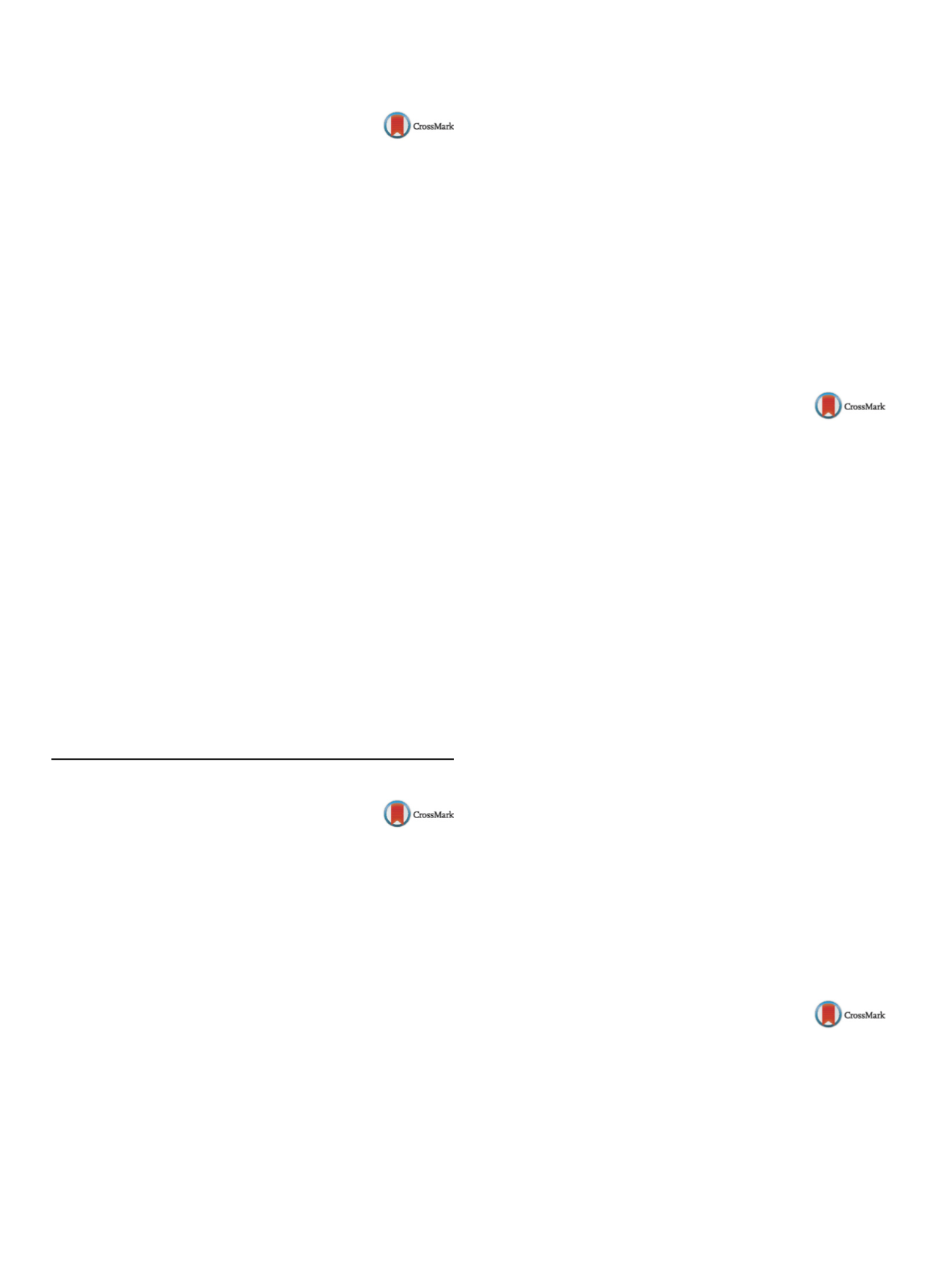

S764
25th European Congress of Psychiatry / European Psychiatry 41S (2017) S710–S771
EV1105
Clozapine treatment of adolescent
refractory emergent emotionally
unstable personality disorder:
Challenges in diagnostics and
therapeutics
S. Whitaker
1 ,∗
, M. Mathe
21
Greater Manchester West Mental Health NHS Foundation Trust
. . .
,
Young peoples service, Manchester, United Kingdom
2
Priory Hospitals, CAMHS, Birmingham, United Kingdom
∗
Corresponding author.
Despite recent advances precision diagnostic criteria on how best
to diagnose and treat EUPD remains debated. Therapeutic indica-
tion and appropriate use of anti-psychotics including clozapine in
this patient group remains unclear. It is debated about personal-
ity disorder being diagnosed in children and adolescents, overall
it is much more acceptable for adolescents to be given a diagnosis
of ‘emerging’ personality disorder if they exhibit clinical features of
such. Clozapine has beenused (as an off-license treatment) in adults
diagnosed with personality disorder improving psychopathology
and quality of life. These patients have been tried on numerous
other treatments. In a secure unit for adolescent girls who meet
the criteria for a diagnosis of emergent personality disorder who
posed serious risks to themselves and others three were given a
trial of clozapine The off license use of clozapine was tried in all
three patients showed a reduction in incidents, reduced need for
polypharmacy and improvement in their qualities of life. One can-
not account for these changes being the result of clozapine alone;
however, these cases add to the growing body of evidence of the
benefits of clozapine in patients with emergent personality disor-
der.
Disclosure of interest
The authors have not supplied their decla-
ration of competing interest.
http://dx.doi.org/10.1016/j.eurpsy.2017.01.1435e-Poster Viewing: Psychophysiology
EV1106
Use of eye-tracker device to detect
attention deficits in adults with ADHD
D. Adamis
1 ,∗
, M. Unal
2, E. O’Mahony
11
Sligo Mental Health Services, Psychiatry, Sligo, Ireland
2
Sligo Mental Health Services, School of Medicine, National
University of Ireland, Galway, Psychiatry, Sligo, Ireland
∗
Corresponding author.
Introduction
Adult patients with ADHD may go unrecognized.
This can result in psychosocial and functional decline.
Objectives
To investigate the use of objective testing, with an eye-
tracker device in the diagnosis of adult patients with ADHD.
Methods
Case control study. Inclusion criteria were aged 18–65,
minimum 5 years of education and literate in English. Exclusion
criteria were visual impairment, amnesia and learning difficul-
ties. ADHD was diagnosed with Conners’ adult ADHD diagnostic
interview (group A,
n
= 15) and were matched for gender and
age against normal controls (group B,
n
= 33). Participants com-
pleted four computer-based tasks while their eye movements were
recorded. The tests included (i) Stroop effect test, (ii) Stroop effect
test with visual aid, (iii) perceptual selectivity test and (iv) Sac-
cadic interference. accuracy (%) and response time (msec) for tests
(i–iii) measured while for test (iv), saccade count, average saccade
amplitude and average fixation duration.
Results
Stroop test accuracy showed a statistically significant dif-
ference between group A and group B (
P
= 0.004). Stroop response
time also showed a statistically significant difference between the
two groups (
t
= 3.228, df: 46,
P
= 0.001). For test (ii), there was a sig-
nificant difference for response time (
t
= 2.326, df: 46,
P
= 0.024) but
not for accuracy. For test (iii), the results were statistically signifi-
cant for accuracy; (
t
= 2.682, df: 46,
P
= 0.010) and for response time
(
t
= 4.028, df: 46,
P
= 0.001). There were no significant differences in
the saccadic interference test.
Conclusion
Adults with ADHD have a longer response time and
perform less accurately than controls. Thus, these data demonstrate
that there is a use for objective tests (tests i–iii) in the diagnosis of
adult ADHD.
Disclosure of interest
The authors have not supplied their decla-
ration of competing interest.
http://dx.doi.org/10.1016/j.eurpsy.2017.01.1436EV1107
Trauma-related dissociation:
Psychological features and
psycho-physiological responses to
script-driven imagery in borderline
personality disorder
D. Bichescu-Burian
∗
, S. Jürgen , S. Tilman , T. Stefan
Centre for Psychiatry Südwürttemberg, Weissenau, Clinic of
Psychiatry and Psychotherapy I, Ravensburg, Germany
∗
Corresponding author.
Background
Defense reactions to threatening situations are vital
adaptations to stress that protect organisms from injury and ensure
survival. We retrospectively investigated the role of peritraumatic
dissociation (PD) in the occurrence of severe psychopathology and
dissociative patterns of reactions in borderline personality disorder
(BPD).
Methods
We recruited 28 patients with a clinical diagnosis of
BPD and 15 healthy controls. The BPD group was divided accord-
ing to the level of PD (low vs. high): BPD and PD (
n
= 15) and BPD
only (
n
= 13). We conducted an extensive investigation of history of
trauma, clinical status, and measurements of emotional and phys-
iologic responses to recall of personalized aversive experiences.
Results
Participants with BPD and high PD displayed highest
degrees of trauma exposure and clinical symptoms. Their signif-
icant heart rate decline during the imagery of personal traumatic
events was opposed to the heart rate increases exhibited by the
other two groups and may indicate a dissociative reaction pattern.
Skin conductance responses did not differentiate between groups.
Several emotional responses to imagery provided also support of
the idea that PDmay play a role in memory processing of traumatic
events and thus in the aggravation and maintenance of symptoms
in particularly severe forms of BPD.
Disclosure of interest
The authors have not supplied their decla-
ration of competing interest.
http://dx.doi.org/10.1016/j.eurpsy.2017.01.1437EV1108
Smooth pursuit eye movements in
psychiatric inpatients
L. Mandolesi
1 , G.Piraccini
2 , F. Ambrosini
1 , F.L. Vetere
1 ,R.P. Sant’Angelo
2 , R. Raggini
2 , M.Benassi
1 ,∗
1
University of Bologna, Department of Psychology, Bologna, Italy
2
Istituto AUSL della Romagna, Cesena, U.O. Servizio Psichiatrico di
Diagnosi e Cura, Cesena, Italy
∗
Corresponding author.
Introduction
Eye movements are used in several studies as a
biomarker in order to evaluate cortical alterations in psychiatric
disorders. Pursuit eye movements’ deficits were found both in


















